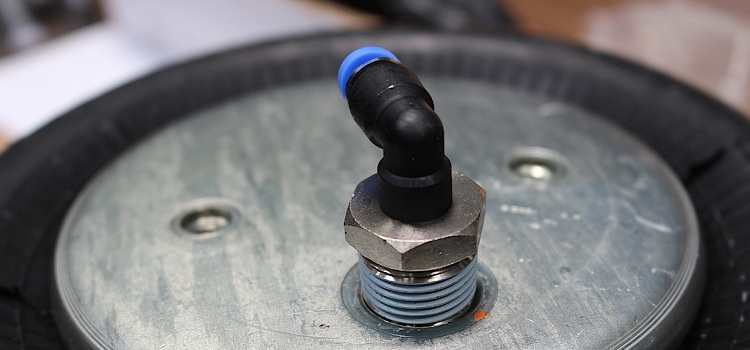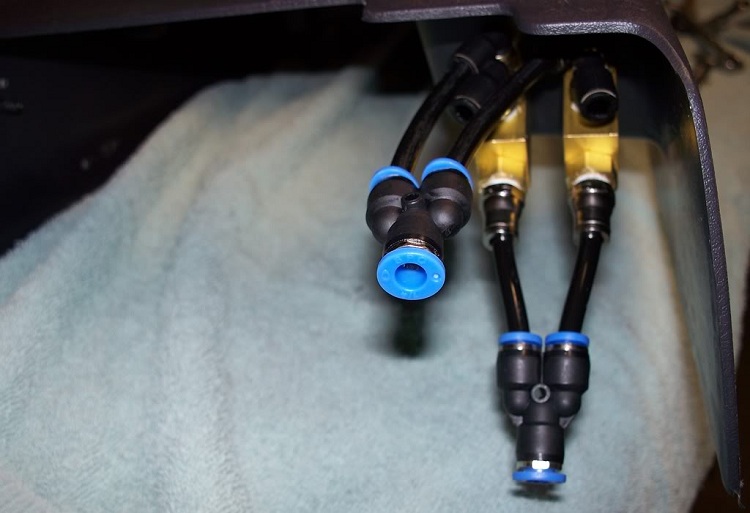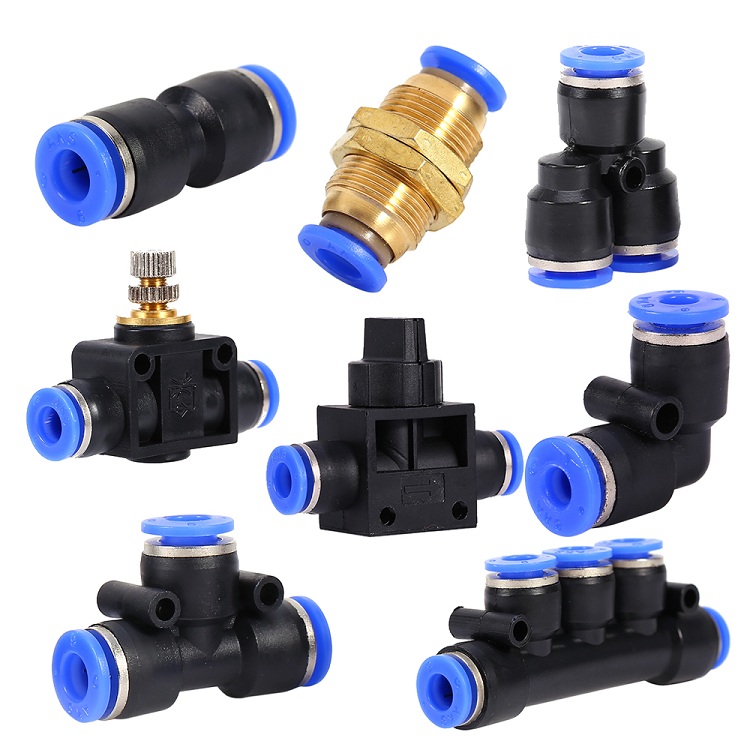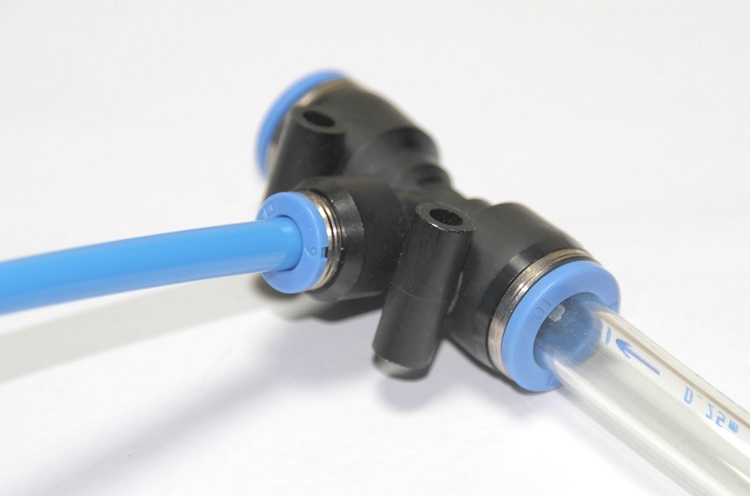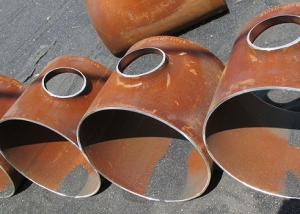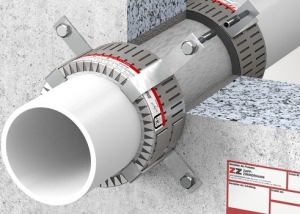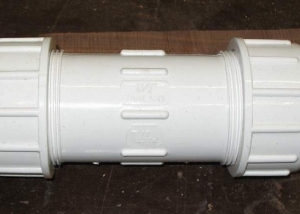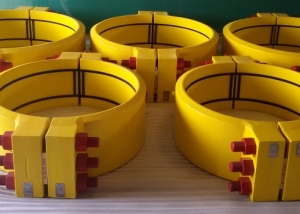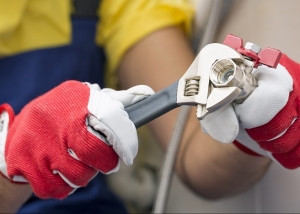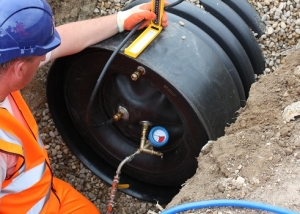Pneumatic fittings are connecting devices that are used to connect pneumatic hoses to each other, as well as to connect these hoses to pneumatic equipment and tools. For such systems, reliable sealing is important in the first place, therefore pneumatic fittings must be of high quality and eliminate any air leaks.
Content
Materials from which pneumatic fittings are made
Fittings for pneumatic systems are made of different materials. Namely:
- various metals;
- stainless steel with excellent anti-corrosion properties;
- modern polymeric materials;
- mixed options, which include both metal and plastic parts.
Note! Connectors for pneumatic systems made of stainless steel are able to withstand high temperatures (up to 200 ° C).
Plastic parts differ in a number of advantages, among which it is worth noting the low cost of such pneumatic fittings, as well as corrosion resistance and a long service life.
Today, there is a wide selection of connecting elements for pneumatic systems that differ in their design and installation method, which allows to expand the scope of use of these devices.
Operational field of pneumatic fittings
Pneumotubes and pneumatic fittings are used to create reliable connections in pneumatic systems. These systems can be varied and used for different purposes. In addition, it is worth noting that these connecting elements are also used in structures that pump previously filtered air.
And also they are used when connecting individual elements of the water supply structure. This application justifies itself when you need to install a connection with maximum sealing performance. In the case of mounting a pneumatic connecting device on the water supply, it is necessary to choose the right material for the manufacture of such a fitting. This is necessary in order to ensure the long service life of both the fitting and the water supply system as a whole.
Pneumatic fittings used in systems transporting filtered air are able to withstand internal pressures of up to 12 bar. The temperature stability of such devices ranges from −10 to +70 ° C. Acetal high-tech plastic, which is characterized by high technical characteristics, is used as a material for such pneumofittings.
Pneumatic fitting, made of polymers and used in various industries. In factories, they are used to dock elements of systems that transport and process compressed air or other gas.
Consider the main devices that use such connecting elements:
- pneumatic valves and cylinders;
- regulators;
- filters and microfilters.
Varieties of pneumatic fittings
There are two types of these devices according to their purpose:
- Pneumatic fittings that control the flow of the working medium (compressed air or other gas). Such fittings are capable of making changes in the physical characteristics of the working medium passing through them. Used in different systems (e.g. silencer).
- Collet quick-disconnect connecting parts that are necessary for quick connection or dismantling of individual elements of the system.
Important! To connect the individual structural parts of pneumatic systems, two main types of fittings can be used: threaded and quick-release collet.
According to their design, all pneumatic connecting fittings are divided into:
- direct pneumo fittings. Such parts are used for joining two pipes having the same diameter. Docking occurs on a straight section of the structure;
- corner products. Used to change the direction of the structure at a certain angle;
- tees. Necessary for the organization of branches from the main stream;
- transitional pneumatic fittings. Pipes with different indicators of diameter are joined;
- connectors. Through these elements, pipes with the same or different cross-sectional indicators are connected, as well as pipes from different materials;
- stubs. They are used to clog the end hole in the system.
Installation of such connecting elements is usually carried out manually. This is necessary so as not to damage the product.
Mounting collet fittings
Consider an example of installing a collet connecting pneumatic fitting:
- First of all, it is necessary to prepare two tubes that will be joined with the help of a collet pneumofitting. To do this, appropriate marking is performed and the tubes are cut with special scissors to obtain the desired size.
- At the second stage, you will need a special device - a calibrator. Using the calibrator, you must align the shape of the cross section of the tubes.
- At the third stage, you need to remove the chamfer from the inner surface of the tubes. To do this, it is recommended to use a special device - a chamfer.
- Further, it is recommended to check the pneumofitting for the presence of all structural elements, which include: gasket, sealing elements, etc.
- Then, the pneumatic connecting device is directly mounted. A union nut and a collet are put on the tube.
- Next, the tail element of the fitting is inserted to the limit in the hole of the tube.
- At the seventh stage, the union nut is tightened (manually).
Helpful information! Installation of the fitting on the second tube occurs according to the same algorithm.
- Tighten nuts with a ring wrench.
A huge assortment of these parts allows you to choose the necessary pneumofitting for a particular case. Such fittings are used for various purposes and are characterized by high performance.
